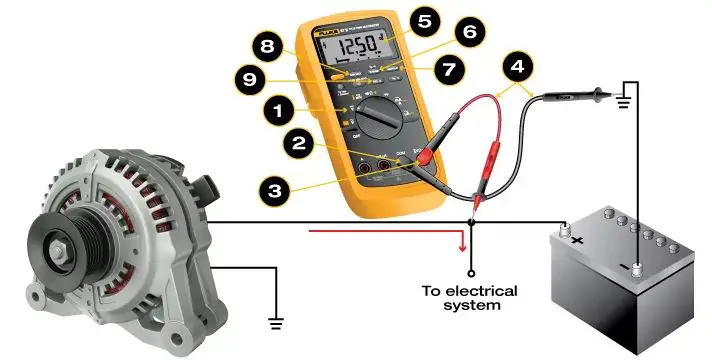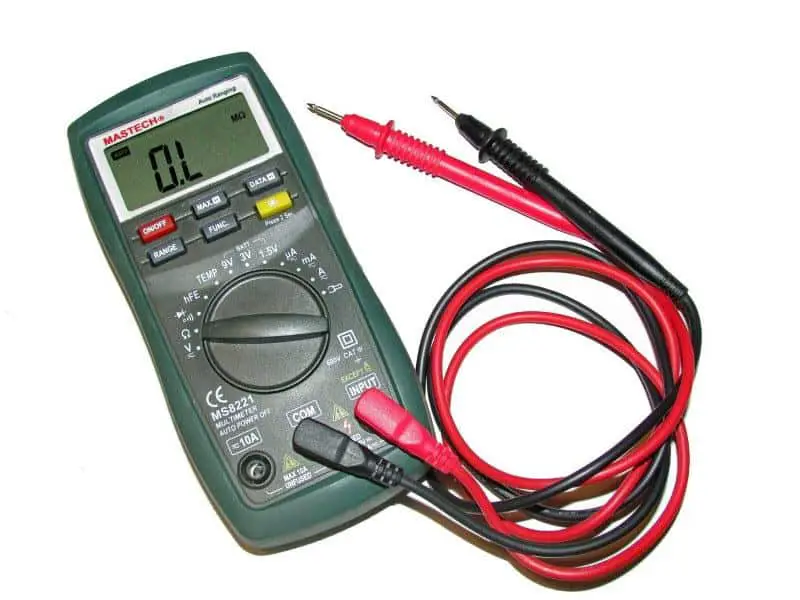The electromagnetic fields (EMFs) produced through electrically charged objects are easy to measure. These objects are categorized into three types:
- Electric field
- Magnetic field
- Radio frequency
There are various ways you can measure EMF radiation. Are you wondering if you can measure EMF with a multimeter? Read on as I take you through a step-by-step procedure on how to use a multimeter to measure EMF radiation.
When measuring EMF, you have to keep in mind the frequency of EMF radiation and the strength of the frequency. The frequency is measured in Hertz (Hz), while the strength of the EMF radiation can be measured using Watts (W), Volts (V), or Gauss (G), among other units. One of the common tools used in measuring EMF is a multimeter. A multimeter is a multi-tester that measures voltage, resistance and the current in a charged object.
The unit of measurement depends on the frequency, type of radiation and the medium used.
Measuring EMF determines the strength of its radiation, and this can be done by:
- Using a multimeter to measure the voltage of AC electrical fields.
- Using a Gauss Meter to measure the AC of magnetic fields.
- Using a radio frequency (RF) meter to measure the radio waves.
Check out this video summary of the article if you prefer watching:
Methods of Measuring
Here are some ways of measuring that I would like to discuss in more detail:
- Measuring EMF Using Radio Frequency
Radio frequency uses both components of electric and magnetic fields. Therefore, when determining the radiation strength, it should be expressed in each of the two components.
RF for electric field is expressed as volts per meter (V/m) while RF for magnetic field is expressed as amperes per meter (A/m).
The RF can also be measured using microWatts per square meter (µW/m2) or milliWatts per square meter (mW/m2).
- Measuring Radio Waves With Power Density
You can also measure the RF using the power density. You can accurately measure the power density using the ‘far field’ of the radiation pattern. We measure the power density of EMF radiation using far fields because it is difficult to accurately measure the electric and magnetic fields in the near field.
The far field enables us to measure the power density using power per unit area, for example volts per meter or milliwatts per square centimeter.
The easy way to measure EMF radiation is the use of volts per meter (V/m). The majority of EMF meters measure radiation in the form of V/m.
- EMF Unit of Measurement Using Magnetic Field
Magnetic fields can cause radiation. Even a weak source of a magnetic field can cause some health issues to our bodies over time. Magnetic fields are measured in Gauss in North America and in Tesla in the rest of the world. Because the magnetic fields cause a lot of damage to our bodies, they are measured in very small units of measurement, such as milliGauss (mG) or MicroTesla (µT).
- EMF Unit of Measurement Using Electric Field
You can measure the electric field the same way you measure radio frequency radiation. The only difference is the scale of measurement. Electric fields are generated by an AC power source. These fields are measured using AC voltage with a multimeter.
A digital multimeter can measure both DC and AC voltage. It is a test tool for electromagnetic field radiation, capacitance, current, resistance, and frequency.
How a Multimeter Works
A digital multimeter (DMM) consists of three parts:
- Display
- Ports
- Selection knob
The display shows four digits and can also display a negative measurement. The selection knob allows you to set the multimeter for reading various measurements, like setting it to measure voltage, current or resistance. The ports are used to connect the leads/cables.
Multimeters measure voltage between two points. A standard multimeter measures current, voltage, and resistance, whereas an advanced multimeter measures capacitance and inductance in addition to those measured by a standard multimeter.
The voltage is the measure of potential difference between two points, and it is commonly used to check the voltage in a battery. You can also use a multimeter to measure current flowing in a circuit. The current or voltage measured is either Direct Current (DC) or an Alternating Current (AC).
A multimeter comes supplied with two leads (black and red). The black lead or cable should be plugged into the port labelled ‘COM’ (short for common). Then the other cable is plugged into either of the ports based on what you want to measure. The available ports are for measuring voltage and current. The leads are made of copper wires. If you put the cable in the wrong port, it can blow or destroy the multimeter. In our case, we are going to measure voltage.

Steps involved in measuring voltage
- Turn on the label as shown above. If you’re dealing with high voltage, there will be symbols depending what country you are in.
- Insert the black lead into the COM port/jack.
- Since we are measuring voltage, insert the red lead into the port labelled V. The cables should be removed in reverse order: red first then followed by the black.
- Connect the cables to the circuit to test it. The black lead should be plugged to the negative polarity, while the red lead should be connected to the positive terminal.
- Read the voltage displayed.
- Modern digital multimeters use Autorange by default. If you want measurement of a specific range then press the ‘Range’ button several times until it selects the desired range. If you want to measure voltage for DC current, then:
- Disconnect the leads.
- Change the settings to [mV dc symbol].
- Connect the leads again and read the measurements displayed.
- Press on the button labelled ‘HOLD’ to obtain stable voltage measurement. Once the measurement is completed, read the voltage.
- Use MIN/MAX buttons to obtain the lowest and highest measurements.
- The relative (REL) and the delta (?) buttons set the digital multimeter into a specific reference value. This displays the measurements above and below the reference value.
In a fully charged 12 volt battery, there is an open-circuit voltage that ranges from 11.9 V to 12.6 V. A dead battery has a measurement of 11.9 V, and 12.6 V indicates a fully charged battery.
Summary
A multimeter is used to measure the EMF radiation in a building. There are different units of measurement of EMF radiation such as volts, watts and Gauge. A multimeter can measure the EMF radiation using AC electrical fields.
The other units of measurement are done through measuring of AC magnetic fields using a Gauss Meter and the use of RF meter to measure the radio waves.
A multimeter can measure the EMF by obtaining the current flowing and the resistance within a particular EMF source. Proper connection of the black and red cables into the right port will accurately measure the voltage or the current flowing in a particular circuit.


